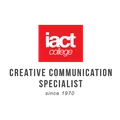
Industry Workshop with Award-Winning Director of Photography (DOP) Wong Chin Hor – Written by Lor Yew Mien
‘The story is the most important thing of any production,’ says Chin Hor, who has shot documentaries for National Geographic and History Channel.
‘The DOP is an extension of the director, so you need to know the story that you are shooting for.’
The 6 hours industry workshop that was held on Thursday, 9th of March was organized as part of the BA (Hons) Media, Culture and Communication Year 3 broadcasting module. It was opened to all Broadcasting students in IACT College to join. 16 pairs of earnest eyes looked on as Chin Hor stood beside his Canon C300, trying to capture wisdom from his 11 years of experience in the documentary industry.

Chin Hor stressed that a good DOP must have good grasp of camera fundamentals such as exposure, focus, framing, colour and contrast. The use of tripod and caring for sound are equally important. He shared that in his experience, there were industry professionals who neglected such fundamentals, resulting in subpar or unusable video footages.
Even though lighting in documentaries is not as complex as other forms of video productions, it is still key in getting good shots. ‘Where does the sun rise and sets? The sun is the main light source in any outdoor shoot. The position of the sun determines colour temperature and also how the shadow will be cast. If it’s indoor, look for windows and test out all available lights.’ Chin Hor showed how the matte box on his camera can be used to cut flare; explained the use of polarizers and filters for camera lens; and demonstrated the proper way of holding reflectors.
‘Remember, the job that you are doing is an audition for the next one!’ Chin Hor exclaimed. He insisted that good habits are part and parcel of good work ethics. Some habits he practiced: regular maintenance and cleaning of equipment, take pride in all your work (regardless of payment amount), learn to work independently but be a team-player, pay attention to your surrounding so you can think two steps ahead, be culturally sensitive and be professional.
According to Chin Hor, styles and techniques of shooting depends on a few factors. One factor is the production company or TV station that the documentary is made for, as the technical specifications differs from local stations to Al Jazeera. Genre is another factor, a travelogue could have more dynamic camera movements compared to serious issue-based documentaries.
‘You should know why you are shooting each shot and make sure that every shot is good enough for the edit,’ he continued, adding that a variety of shots is necessary, to give options for editors and directors. Through experience, a DOP will learn to gauge when they have taken enough shots.

After more than two hours of sharing, Chin Hor then proceeded to set up for an interview shoot, complete with 3-point lighting. He explained the use of each equipment as he sets them up. The lecturer sat in as the interviewee, while the class took out their camera to see how the shot looks like through their lens. Chin Hor showed how different lighting setups could have different effect on the subject matter, and also that no two cameras captures light and pictures in the same way.
‘The camera operator should be well-versed with their camera, but sometimes client may ask you to use a different camera for a job, then you should do research and practice with that camera beforehand,’ Chin Hor shared.
The class then divided into groups of 3 to practice setting up their own interview shoot. Chin Hor went around to give more personalized feedback to each group. After staying on for another hour post-workshop to quiz Chin Hor, the students finally left, looking inspired and ready to give cinematography their best shot.

 +60142521561
+60142521561







